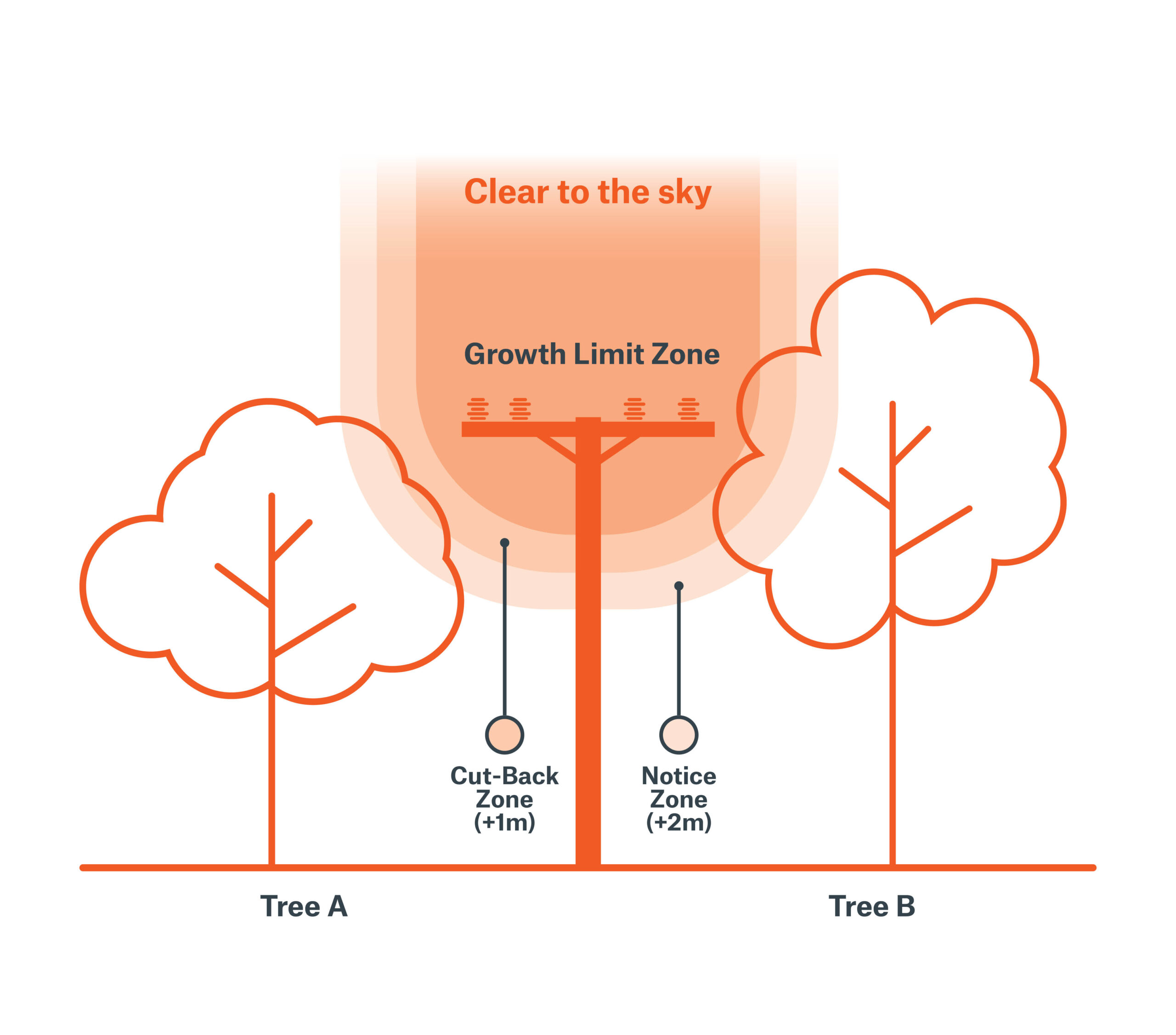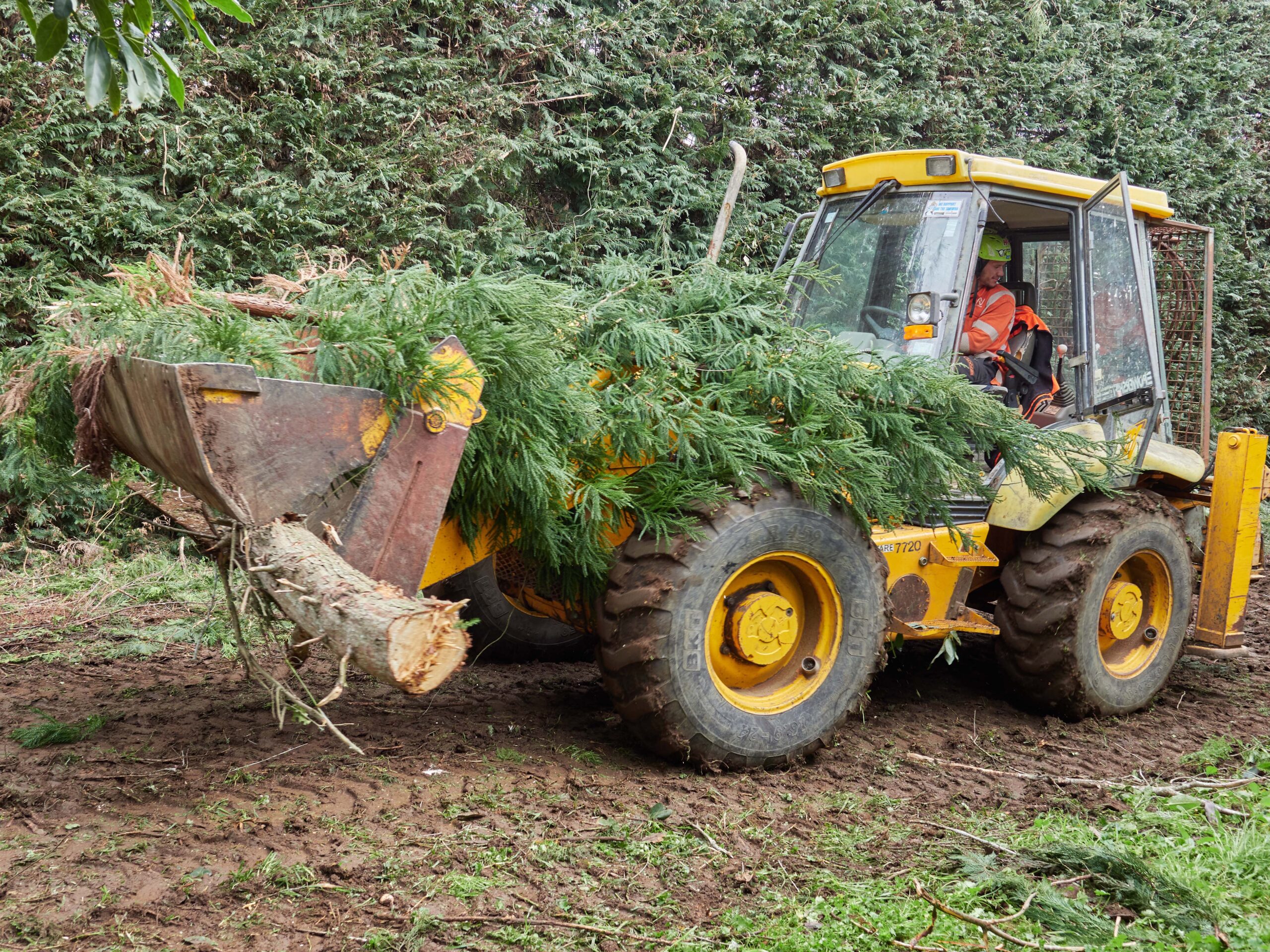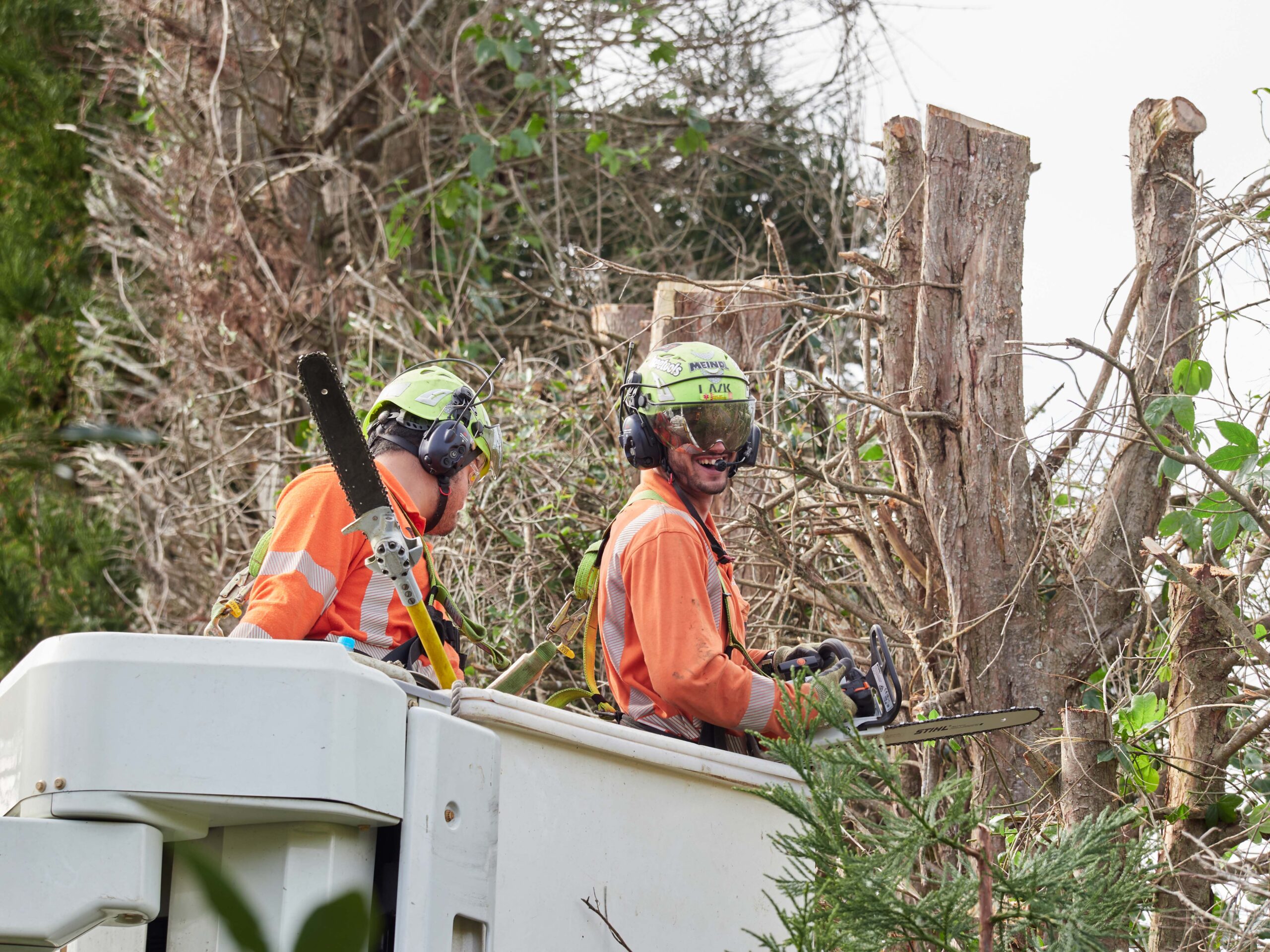Who’s responsible for trees near power lines?
Your responsibilities
If you own the land that a tree is growing on, then it’s generally your responsibility to ensure the tree is well away from power lines. You could be liable for the significant cost of any damage to power lines. That’s why it’s important to check trees or hedges regularly and take appropriate action if they do pose a risk. If you’re unsure what to do, contact us for advice.
We regularly carry out tree surveys and inspect our lines. We’ll do our best to let you know if your tree is getting too close to our lines, however, we also need you to keep an eye out!
Never go within four metres of a power line due to the risk of electrocution. The below approved contractors can help.
You can contact us to book a safety disconnection before any work goes ahead.
Need a tree trimmed?
These contractors are also approved by us to work near lines:
Northpower Vegetation
Phone: 09 988 9254
Email: whgvegetation@northpower.com
Think Trees Arborist Services Northland
Phone: 021 0238 6231
Email: arborist@thinktrees.co.nz
Treescape
Phone: 0800 873 396
Email: info@treescape.co.nz
T8 Tree Services
Phone: 021 960 920
Email: info@t8treeservices.co.nz
Tree Safe
Phone: 09 411 5076 or 0800 TREESNZ
Email: dale@treesafe.co.nz

The Growth Limit Zone (GLZ)
In October 2024, the Regulations were updated to increase the minimum safe distances between trees and power lines, and a new ‘clear to the sky’ requirement for some trees.
If your tree is growing within the Cut-back or Notice Zone (Tree A), you may get a legal notice saying your trees must be trimmed soon because they’re getting too close to power equipment.
Should they reach the Growth Limit Zone (Tree B), you will get a legal notice requiring them to be trimmed. For safety reasons, trees and vegetation in the GLZ can only be trimmed by us or an approved contractor. No person or piece of equipment is permitted within four metres of the power lines.
Maintain a safe distance
Voltage
Power lines (230-400 V)
High voltage lines (11 kV)
High voltage lines (33 kV)*
High voltage lines (50-66 kV)*
High voltage lines (66 kV or more)*
*Clear to the sky requirement
Growth Limit Zone
0.5m
1.6m
2.5m
3.0m
4.0m
Cut-Back Zone
1.5m
2.6m
3.5m
4.0m
5.0m
Notice Zone
2.5m
3.6m
4.5m
5.0m
6.0m
What is a Cut or Trim Notice?
Our contractors continually check the network for trees and vegetation that pose a risk to power equipment. You’ll receive a Cut or Trim Notice if your trees need attention under the Regulations.
In most cases, if it’s your first Cut or Trim Notice we’ll pay for it (conditions apply). After that, you’re responsible for taking care of the trees on your property. This includes organising and paying for an authorised contractor to trim them safely if they’re close to power equipment. Being proactive and inspecting your trees will help ensure the power can stay on for everyone. Please note that if your trees cause any problems on the electricity network, you may be charged for all repair costs.

What happens if I don't keep my trees trimmed?
Because of the danger that trees in power lines cause, there are penalties if you don’t comply with the government legislation Electricity (Hazards from Trees) Regulations 2003.
Tree owners who receive a Cut or Trim notification from us must ensure the tree is trimmed to outside the Notice Zone (NOTZ) within the timeframe in the notification outlined below.
If you don’t do this, you could be fined up to $10,000 plus up to $500 per day for continuing offences.
You could also be liable for costs if our lines or equipment are damaged by the tree.
If you no longer want to maintain a tree
It’s your decision whether you want to continue to maintain a tree or have it removed. If you don’t want to organise and pay for regular maintenance, you can declare ‘No Interest’ in the tree if:
- The tree was naturally sown or
- The tree was planted, and at the time of planting, the tree owner believed the tree, when fully grown, wouldn’t interfere with power lines
You need to read, understand and fill out our No Interest Tree Form, and we’ll advise whether we will remove the tree or what trimming we can do. Please note that if you choose this option, the trees may be trimmed to a level deemed suitable by us or removed.

Which trees are best to plant around power lines?
Please don’t plant trees that will grow large close to power lines – low shrubs and small trees are best. You can view a list of our recommended trees here.
When planting trees, please always check for power lines and underground cables before you dig.
When purchasing a property, you may also like to check if mature trees are growing near power lines, as there can be large maintenance costs in keeping them trimmed.
